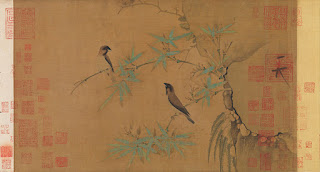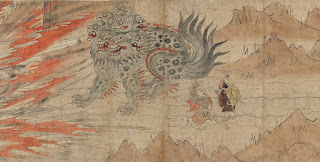Artwork Analysis Blog Post (Due October 23, 2020)

Chinese paintings are very unique in style and methodology. Calligraphy was very important, as it would create somewhat of a story around the piece on display for views and artists alike to connect to. This piece, “Finches and Bamboo”, an early twelfth-century painting Emperor Huizong, is a display of just how masterfully paintings and calligraphy can blend to create a gorgeous, profound piece. The small size of the finches and the large size of the calligraphy shows that Huizong followed a similar philosophy to his fellow Chinese painters – capture the essence of your subjects and their environment, not just a physical representation. Works Cited The Metropolitan Museum of Art: Asia. New York: The Metropolitan Museum of Art, 1987, pp. 68–69, pl. 38. https://www.metmuseum.org/art/collection/search/39936

